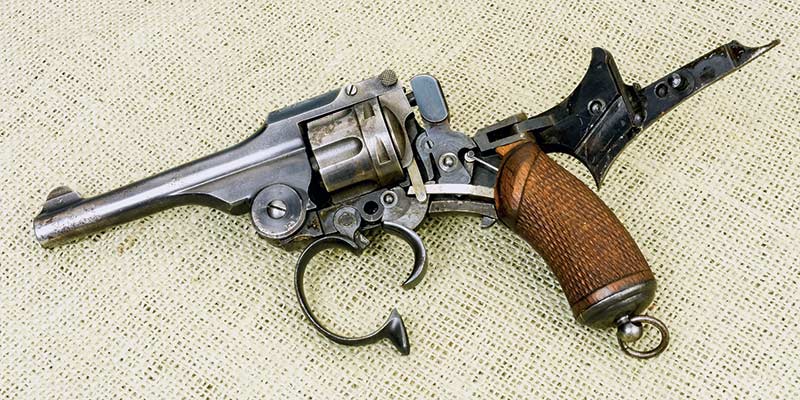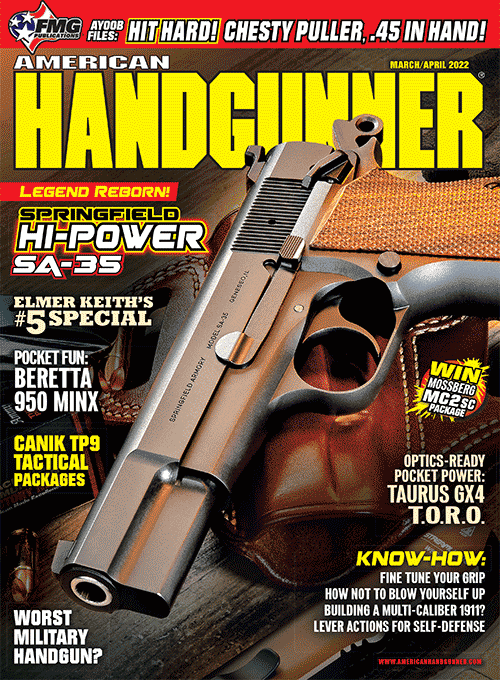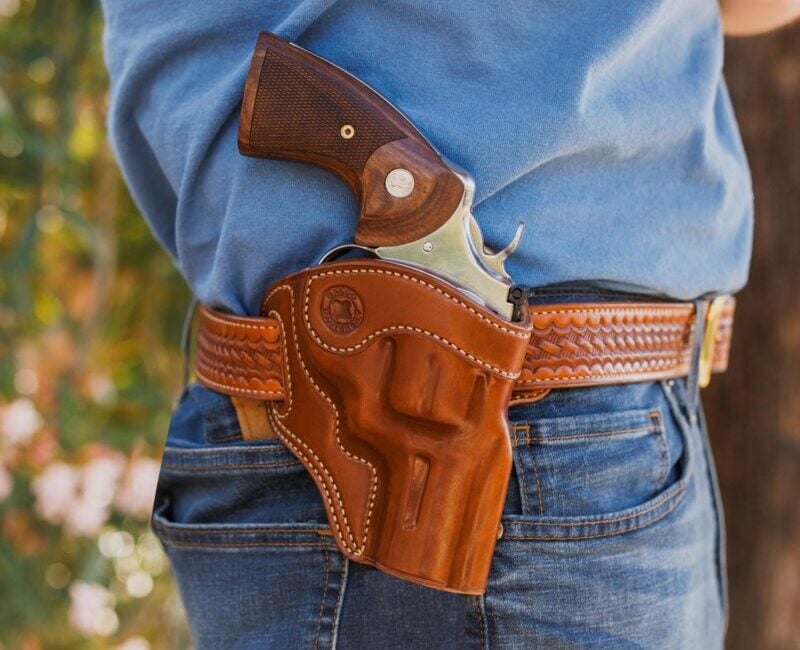The Worst Military Handgun
Anyone who has studied the history of military handguns must wonder how some ordnance officers formed their concepts of ideal handguns. For instance, consider the Russian Model 1895 Nagant revolver with its odd 7.62mm cartridge wherein the bullet is seated fully inside the cartridge case. That was because when the hammer is cocked, its cylinder is pushed forward over the butt end of its barrel. The idea with such a system is gas cannot leak upon firing. Never mind the gas leakage between barrel/cylinder gap has been of no importance with successful revolver designs for a half century!
American ordnance officers were not exempt from mistakes. In 1892, they chose to drop .45 Colt as the U.S. Army’s handgun cartridge in favor of .38 Colt (aka .38 Long Colt). It was a piddling little round pushing a 150-grain bullet at only about 750 fps. Its lack of power resulted in it being replaced by .45s again in only a few years. The abovementioned 7.62mm Nagant used a 108-grain bullet at a mere 900 fps.
The Worst Ever?
But personally, I think the biggest joke among military handguns is Japan’s 9mm Type 26 revolver introduced in 1893. Don’t let the 9mm moniker fool you as it has nothing to do with the famous rimless 9mm Parabellum (9mm Luger) that pushes 115/124-grain bullets in the 1,200/1,300 fps range. Nope. The 9mm Japanese revolver cartridge is rimmed and fired a 149-grain bullet at approximately 750 fps. (Did the Japanese ordnance officers copy American’s .38 Long Colt?)
A weak chambering isn’t enough to consign a military cartridge into the silly category. After all, three decades later, the Brits thought a 200-grain .38 at 650 fps was sufficient for combat. It’s just that the Type 96 incorporated several other poorly thought-out features. One is it fires in double-action mode only (otherwise known as self-cocking). Again, a few decades later, the Brits followed with a variation of their little Enfield Mk. 2 No. 1 .38s. They removed the hammer spur, so only double-action shooting was feasible. Supposedly, this was done for tank crewmen because hammer spurs entangled on things inside a crowded turret.
A worse idea with Japan’s Type 26s is that locking bolts only hold chambers aligned with barrels when triggers are pulled. Otherwise, the cylinder is free to rotate. This feature might have back-fired on “Dirty Harry” when he asked, “Did I fire five or six?” With the Type 26, who would bet their life the next round coming up in a free-wheeling cylinder was live? Any sort of strenuous activity might have rotated it.
Model #3 Inspiration Gone Bad
Type 26s are of top break design, obviously leaning on S&W’s Model #3s from the late 1800s. Lifting the barrel hinge allows it to pivot downwards, which then cams its extractor up simultaneously emptying all six chambers. (Japan had purchased thousands of S&W Model #3s for the .44 Russian cartridge. I recently read of a U.S. Marine on Iwo Jima finding six pristine condition S&W .44s in a cave while the battle was still raging.) Type 26s had 4.7″ barrels and weighed 2 lbs. Sights were a simple groove in top strap for rear and a half moon front. One good feature is the front sight blade is pinned to a stud machined integral with the barrel. Therefore, front sight blades can be changed to help zeroing for elevation. Grips are checkered wood, round in shape and obviously meant for smaller hands than my big American mitts.
Pulling down on Type 26 trigger guards frees side plates so they swing away, revealing the revolver’s inner workings. That would be great for cleaning, but I’m sure Japanese soldiers were instructed not to mess with their revolvers’ innards without supervision. For Americans, with their penchant for figuring out how things work, such instructions would have been considered suggestions or challenges. By World War II, Type 26s were obsolete and mostly were issued to NCOs.
My Type 26 showed up at a Montana gun show, complete with its clamshell holster and carrying strap. It has a minor amount of pitting on it indicating it saw service but still its excellent manufacturing quality is evident. It’s not a hunk of junk; just poorly thought out. Cases can be made from .38 Specials, but I just bought mine from Buffalo Arms of Idaho. My handloads consist of 2.0 grains of Hodgdon’s Titegroup under 147-grain Oregon Trail 0.356″ bullets. Assembling the rounds can be done with .38 Super or .38 Long Colt dies. I have shot it enough to know I cannot hit much with it past about 50 feet.
It’s my pick for the all-time worst military handgun.
Subscribe To American Handgunner

Get More Revolver Content Every Week!
Sign up for the Wheelgun Wednesday newsletter here:








